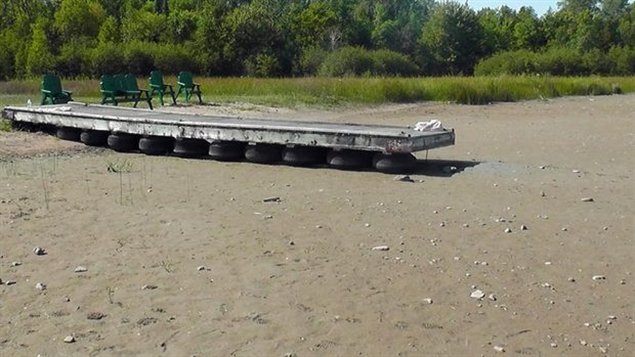The Great Lakes between Canada and the United States are benefiting from the year’s heavy rain and snowfall. But following a year that brought some of the lowest lake-levels in recent memory, researchers are not celebrating just yet.
ListenJohn Nevin, a spokesperson for the International Joint Commission, the body that manages the waterway interests of both Canada and the United States, says despite forecasters predictions of more snow and rain this year, there are so many factors affecting lake levels that no one can be certain.
Since the late 1990’s, dropping water levels in all five great lakes have been a major challenge for cargo shippers, costing an estimated $20,000 per freighter. Marina and ferry operators have been hard-hit, as well, and cottage-owners and people who take advantage of the beaches and lake-shores over the summer have had to adjust.
Levels in all the lakes were higher when measured at the end of October this year, than the same time last year when much of North America was in the midst of a drought.
Lake Huron and Lake Michigan dropped most significantly, but they were up by almost a foot, or 30 cm, since October 2012. While the increase is good news, the levels are still about 17 inches below their long-term average for the month. Lake Superior was just slightly below average, Lake Erie was normal and Lake Ontario, was one inch above normal. Lake Ontario, however, is the only one with regulated levels.
The U.S. Army Corps of Engineers district office in Detroit, works with the National Oceanic and Atmospheric Administration and Canada’s Department of Fisheries and Oceans, to measure waters levels with gauges and stations around the Great Lakes to monitor the condition and predict future trends.
The lake levels have fluctuated since record keeping began in 1918. During the 1960’s levels were low, but by the 1980’s they had increased to the point where cottages on Lake Michigan were washed away.
Experts credit an El Nino event in the Pacific Ocean in the late 1990’s for the sharp drop in lake levels. The warming of the Pacific Ocean then, caused a rapid increase in the evaporation from the lakes that has continued since.







For reasons beyond our control, and for an undetermined period of time, our comment section is now closed. However, our social networks remain open to your contributions.